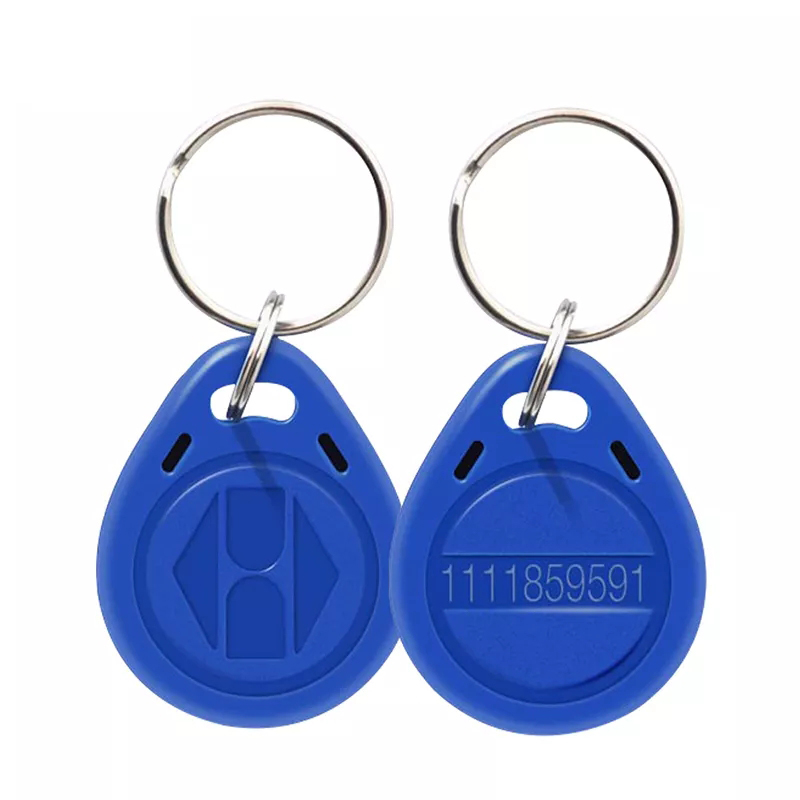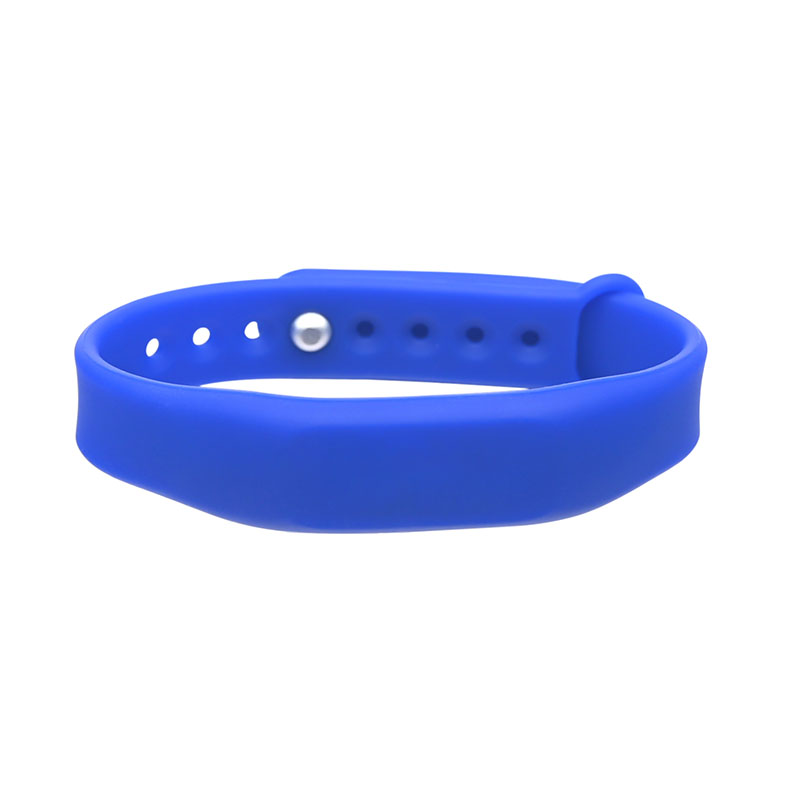
In industries where identity verification, access control, and real-time tracking are crucial, wristbands serve as more than just identification tags—they are tools for safety, efficiency, and data collection. Two major types of wristbands dominate the landscape: RFID (Radio Frequency Identification) wristbands and traditional Paper Wristbands. While Paper Wristbands have been used for decades, rfid wristbands are quickly becoming the preferred solution in sectors like healthcare, events, hospitality, and amusement parks. This article dives into the core differences between these two technologies, focusing on their impact on security and operational efficiency, supported by practical use cases, industry insights, and emerging trends.
Paper wristbands are typically made from materials like Tyvek or other synthetic paper. They are low-cost, disposable, and often used for short-term identification in hospitals, concerts, or festivals. These wristbands rely on visible printing or color-coding and offer no electronic functionality. Their simplicity makes them easy to distribute but limits their capability in data tracking and automation.
rfid wristbands, on the other hand, contain embedded microchips and antennas that communicate wirelessly with RFID readers. They can store information such as a person's name, medical history, access rights, and payment details. rfid wristbands come in various materials, including silicone, PVC, woven fabric, and thermal plastic, depending on the intended environment and duration of use.
RFID technology uses electromagnetic fields to automatically identify and track tags attached to objects. Wristbands embedded with RFID tags can be categorized into low-frequency (LF), high-frequency (HF), and ultra-high-frequency (UHF) types, each suitable for different ranges and data capacities. HF is often used in hospitals and libraries, while UHF offers extended reading range ideal for warehouse and event applications.
Security Comparison
Vulnerabilities of Paper Wristbands
Paper Wristbands offer minimal security. Their primary identification feature is visual—names, barcodes, or colors printed on the surface. These wristbands can be easily torn off, swapped, duplicated, or removed and reapplied without detection. For example, in event settings, unauthorized entry is common when attendees pass around wristbands. In healthcare, there's a risk of patient misidentification due to smudged or illegible text.
Additionally, because they are not serialized or encrypted, Paper Wristbands offer no real-time tracking or audit trail. This lack of traceability becomes a major concern in regulated environments or large-scale operations.
rfid wristbands significantly reduce these vulnerabilities. Each RFID tag contains a unique identifier that cannot be replicated. The information stored is encrypted and can be securely read by RFID readers from a distance, reducing the need for manual checks. In hospitals, rfid wristbands ensure that patients receive the correct medications, undergo the right procedures, and are matched with the correct medical records.
Additionally, rfid wristbands can be configured to be tamper-evident. Once worn, they cannot be removed without being destroyed, eliminating the possibility of sharing or reuse. In high-security settings like VIP event areas or hospital ICUs, this added layer of protection is invaluable.
Many RFID systems also include time-stamped access logs, providing an audit trail that can be reviewed for compliance or incident investigation. In environments where security and accountability are paramount, rfid wristbands offer peace of mind.
Operational Efficiency
Manual Processes with Paper Wristbands
Operationally, Paper Wristbands require manual data entry and visual verification, which slows down processes and increases the potential for human error. Hospital staff must manually match patients with charts. Event staff must visually check each wristband, which is time-consuming and susceptible to oversight, especially in large crowds.
Furthermore, data from Paper Wristbands is rarely integrated into centralized systems. Staff must often rely on clipboards, spreadsheets, or manual data entry to update records. This disconnect hampers scalability and makes real-time insights virtually impossible.
Automation and Speed with RFID
rfid wristbands automate these processes. At hospital check-in points, RFID readers can instantly pull up a patient's file. Nurses can use handheld scanners to verify medication against the patient’s ID, ensuring adherence to safety protocols. In large-scale events, RFID enables automatic gate access, reducing queues and staffing requirements.
For example, amusement parks using rfid wristbands have reported a 30-50% increase in operational throughput due to faster access and payment processing. Staff can monitor crowd movement in real time, allocate resources dynamically, and improve visitor experience.
In logistics and asset tracking scenarios, rfid wristbands and tags help organizations reduce shrinkage, improve cycle counts, and streamline inventory reconciliation. RFID-based analytics provide operational insights that are unattainable with manual or paper-based systems.
Cost vs. Long-Term Value
Lower Upfront Costs with Paper
Paper Wristbands are inexpensive, often costing just a few cents per unit. For one-time events or very short-term use, they seem like the economical choice. However, their hidden costs can be significant. Lost or swapped wristbands, staff needed for manual verification, and data entry errors can add up.
Moreover, if a Paper Wristband gets damaged or removed, replacement means additional printing and administrative time. For high-volume settings, this repetitive process can burden staff and introduce avoidable friction.
Better ROI with RFID
rfid wristbands have higher initial costs, typically ranging from $0.20 to several dollars per unit depending on the chip type and material. However, the long-term return on investment is substantial. RFID reduces staffing needs, improves safety, and enables monetization strategies like cashless payments and personalized marketing.
Healthcare facilities report that using rfid wristbands has reduced patient identification errors by up to 60% and improved nurse efficiency by over 20%. These metrics translate into cost savings, better patient outcomes, and higher satisfaction ratings.
In events and theme parks, the data gathered through RFID can be used to enhance customer segmentation, targeted advertising, and loyalty programs. Businesses gain actionable insights while delivering personalized experiences that build brand value.
Use Cases Across Industries
Healthcare
rfid wristbands in hospitals are used for patient identification, medication verification, and access control. A nurse can scan a patient's wristband to automatically verify dosage and medication schedules. rfid wristbands also enable infant tracking, ensuring that newborns are never mismatched with the wrong parent or room.
RFID systems integrate with hospital management software, reducing the administrative burden and improving the accuracy of digital records. Emergency departments benefit significantly from faster triage and immediate access to patient history.
Events and Festivals
Event organizers use rfid wristbands for ticketing, access control, and even cashless payments. Attendees can preload funds onto the wristband, which are then used to buy food, drinks, or merchandise. This increases per-capita spending while minimizing theft and fraud.
RFID technology also supports anti-counterfeit measures, real-time attendance tracking, and post-event analytics. Organizers gain insights into peak entry times, popular zones, and visitor engagement metrics.
Theme Parks and Water Parks
Parks use waterproof rfid wristbands for locker access, ride reservations, and in-park purchases. Visitors enjoy a seamless experience without carrying wallets or paper tickets. The wristbands also help the park monitor guest movement and manage crowd control more effectively.
Some parks even offer mobile apps connected to the RFID system, allowing parents to locate children, receive ride wait time alerts, and track in-park purchases in real time.
Hotels and Resorts
rfid wristbands serve as room keys, payment methods, and identity badges. Guests can access their rooms, book services, and make purchases across the resort with a single wearable device. This enhances the guest experience and streamlines hotel operations.
Hotel operators also benefit from improved security and reduced plastic keycard waste. Integration with CRM systems helps deliver tailored services and track guest preferences across visits.
Regulatory and Privacy Considerations
Implementing rfid wristbands also involves adhering to data protection regulations. Hospitals must comply with HIPAA (in the U.S.) or equivalent privacy laws, ensuring that data stored on wristbands is encrypted and only accessible to authorized personnel. RFID systems must also operate on legally approved frequency bands to avoid interference.
In contrast, Paper Wristbands do not store digital information, so they are not subject to these regulations, but they also cannot support any form of secure or automated data exchange.
Organizations must conduct risk assessments, implement encryption standards, and educate staff on proper handling procedures. Secure RFID systems must have defined access levels and audit trails to meet compliance standards.
Conclusion: Making the Right Choice
While Paper Wristbands offer a short-term, low-cost solution, their limitations in security and efficiency make them unsuitable for high-stakes environments. rfid wristbands, though more expensive upfront, offer unparalleled advantages in terms of safety, automation, scalability, and user experience.
In today's fast-paced and digitally connected world, organizations need more than just identification tools—they need integrated systems that enhance operational workflows and protect sensitive information. rfid wristbands deliver on both fronts, making them the superior choice for any organization seeking long-term value and performance.
With applications expanding across industries and the technology becoming more accessible, now is the perfect time to explore RFID as a strategic investment.
If you're considering making the switch to rfid wristbands or want to explore how this technology can benefit your organization, contact us today for a free consultation and product samples.





